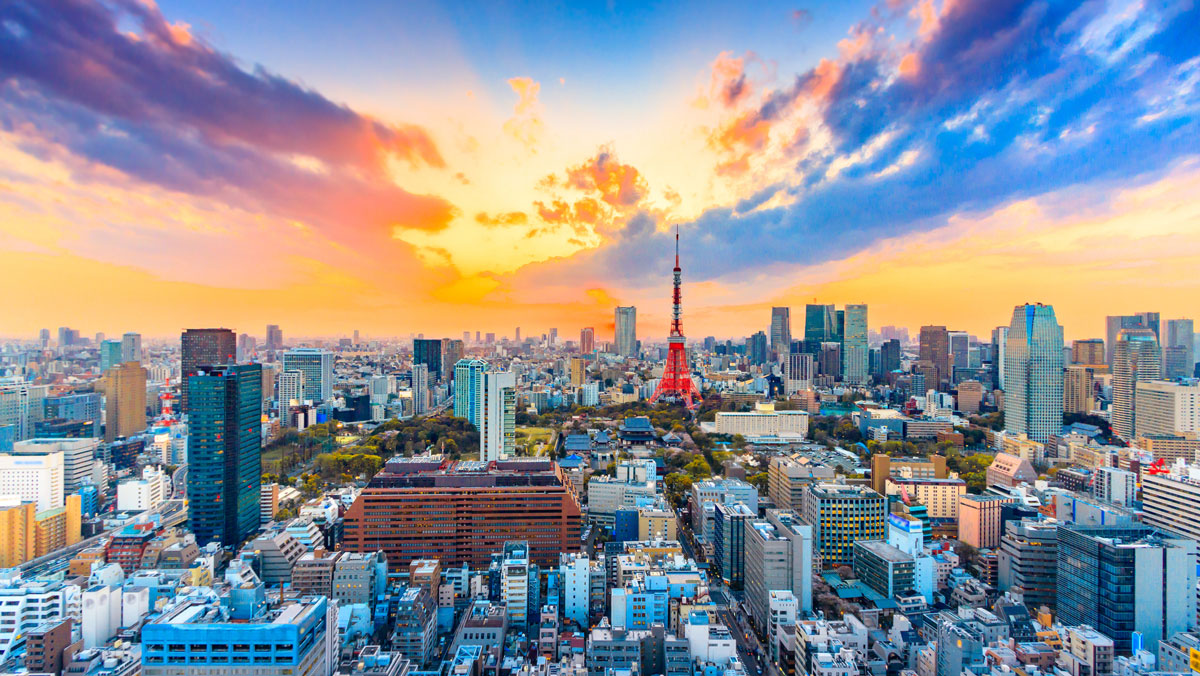The Japanese healthcare revolution

Something that always strikes me when visiting Japan is the uber-modern infrastructure and services enjoyed by residents and visitors alike. Upon touchdown at an orderly, almost peaceful, Japanese airport I feel like I’ve been transported 50+ years into the future. Japan has some of the fastest and most punctual trains in the world, the cleanest streets, and a penchant for high-tech solutions that work brilliantly. If you haven’t experienced a Japanese bathroom, you haven’t lived! However, healthcare is a very different story. It has only recently begun a new chapter as it embraces a passion for technology and modernity which already infuses many other aspects of Japanese life.
Japan, for a long time, was up to 15 years behind the USA in terms of novel cancer treatment. It was a market often not included in initial global launches, even for brands developed domestically. In practice, they were often 5th+ to market.
However, change is in the air. Today, Japan is often seen as the second most important global market, after the USA. Take Roche’s entrectinib for example. Japan’s Ministry of Health, Labor and Welfare (MHLW), approved the drug in June 2019 for the treatment of adult and paediatric patients with neurotrophic tyrosine receptor kinase (NTRK) fusion-positive, advanced recurrent solid tumors. This made Japan the first market to approve this tumor-agnostic brand which has the potential to target NTRK gene fusions found in a range of solid tumors including pancreatic, thyroid, salivary gland, breast, colorectal and lung. Meanwhile in the US and Europe it remains under Priority Review by the FDA and Priority Medicines designation by the EMA.
Healthcare start-ups are sprouting left and right, largely thanks to the Life Science Innovation Network Japan (LINK-J). LINK-J is a non-profit established in 2016 consisting of pharma industry, academia and government, based in the historic heart of Japan’s healthcare industry – Nihonbashi, Tokyo. LINK-J is devoted to pushing the boundaries of healthcare, incorporating high-tech solutions and playing a large role in Japan’s healthcare revolution.
But why such rapid change and who is in the driving seat?
Healthcare policy is set by the government and drug fees are set by a government appointed body, the Central Social Insurance Medical Council. It is generally accepted that ‘Abenomics’ – the economic policies advocated by Prime Minister Shinzo Abe – are helping to foster an environment ripe for start-ups and new business partnerships which, in turn, is stoking the fire of the healthcare revolution. To understand this rapid evolution of healthcare practice we need to understand the broader context on both a social and cultural level:
The shape of Japan’s population pyramid tells a social narrative that is drastically different to other markets. Japan has an ageing population with 30% over 65 years old. In 2017 life expectancy was the highest on record: 81 for men and 87 for women, according to Japan’s MHLW. It is also a shrinking population with an annual decline rather than growth. Immigration is limited and the birth rate is low. By 2060 Japan’s population is projected to be 87 million, down from 128 million today.
Japanese food culture is, traditionally, extremely healthy. Rice is the staple food followed in popularity by different types of noodles. A typical meal includes a bowl of rice, miso soup, pickled vegetables and fish. Meat is a relatively modern concept in Japan, following the lift on its ban during the Meiji Restoration in the 1870s. High vegetable portion, healthy noodles (soba), healthier desserts, smaller food portions, less red meat and plenty of fish are the key contributors to a healthy diet and are linked to Japan’s low incidence of heart disease and long life.
Japanese drug spend is a significant burden on the state. All residents of Japan are covered by either National Health Insurance (Kokumin Kenko Hoken) or employer funded insurance, both with varying levels of co-pay except for those on welfare who are 100% government covered. Bearing in mind Japanese demographics, the state will shoulder an increasingly large burden year-on-year as the population gets older, the pool of those paying taxes decreases, and more people need to be cared for. Moreover, as people get older they become increasingly susceptible to cancer and other conditions. This is due to factors such as the accumulation of genetic mutations, deterioration of immunity, and the degeneration of the thymus gland to little more than a sea of fatty cells and tissues. The shrinking of the thymus means only small pockets of T cells remain, therefore the body finds it harder to protect itself against infections, immune disorders and to seek and destroy dysfunctional cells which can lead to cancer.
Focusing on oncology, what role do treating physicians play?
When it comes to treaters, there is a loud contradiction. In market research we often hear very traditional views and prescribing habits, making Japanese physicians appear to be ‘laggards’ rather than the innovators or ‘future thinkers’ one would naturally assume of one living in Japanese society.
Safety has historically been and still is today the prime driver in brand choice. Show a physician a product profile that has known and manageable adverse events or that is comparable or better vs. current standard of care and they are happy. Show the same physician a profile of a product that has a safety profile that has more complex potential side-effects and they struggle to see past this in assessing the wider benefit-risk profile. Therefore brands that offer a novel mode of action yet potentially a more complex toxicity profile can struggle to thrive in this atmosphere of resistance.
Typically a tumor is treated by the specialist concerned with the organ or tissue of origin e.g. a pulmonologist will treat lung cancer. Why does Japan treat in this manner? The practice has its roots in the development of Japanese medicine which focused on a system based on organ specificities. We can trace this back to the desire to find their own way of practice after the medical community’s initial exposure to Western medicine by the Dutch during its isolationist phase in the Edo period under the direction of the Tokugawa shogunate, between 1639 and 1853.
This is set to change. With Tokyo’s National Cancer Center, as well as the creation of Designated Cancer Care Hospitals, we are seeing a new breed of treaters in a new specialism – medical oncology. These medical oncologists, who treat a range of tumors, have the potential to challenge the risk-averse, safety-first, paradigm. Commonplace in other major markets such as the US, the specialist certification for medical oncologists only began in 2008. As of 2015 there were 1,060 physicians certified in medical oncology by the Japanese Board of Cancer Therapy – a Board created by the Japanese Society of Medical Oncology and the Japan Cancer Association.
Whilst it may feel a bit like a ‘riddle wrapped in a mystery, inside an enigma’ situation in the apparent conflict of Japan’s endless pursuit of modernity juxtaposed against traditional treater mindsets in an industry that tirelessly pursues innovation, perhaps there is an answer.
To bring positive disruption in a society that is pushing for change there needs to be a greater focus on the oncology specialism. The medical oncologists that do exist are playing a key role in helping expand provision of anti-cancer drugs.
Physicians in this role can place greater attention on oncology-specific matters, particularly as we learn more and more about diagnostics, prognostics and develop more targeted and selective therapies. They are the prescribers at the frontline of those using combined chemo and molecular-targeted regimens as well as involvement in clinical trials.
More medical oncologists should translate into a speedier and more optimal advancement of cancer care for Japan. With the explosion of molecular-targeted therapies, and the associated wider range of adverse events vs. traditional chemotherapy regimens, the role of medical oncologists is crucial. Ultimately, they can build all-important confidence in novel brands. This, in turn, will make more traditional treaters feel more comfortable and help spur on the Japanese healthcare revolution at the grass-roots physician prescriber level.
I look forward to the day I touch-down in Tokyo or Osaka and the picture of Japanese healthcare is truly aligned and reflective of the cultural and social experience I enjoy. I have no doubt that as a product of the Japanese healthcare revolution, the country will rapidly see cancer care that is cutting edge, at the forefront of Global innovation, and with consistently high levels of care offered to patients nationwide.
About the author
 Rob Rawlinson is an associate director within the Oncology Centre of Excellence at THE PLANNING SHOP. He has worked in pharmaceutical brand consultancy and market research for eight years across a range of therapeutic areas, with a focus on oncology. He has spoken at the BHBIA Winter Seminar as well as delivering a number of webinars and written articles covering a range of aspects including Digital Healthcare, Art Therapy in Market Research, and Patient Centricity. Rob has a strong interest in healthcare in Asian markets and more generally the development of healthcare practices and culture around the world.
Rob Rawlinson is an associate director within the Oncology Centre of Excellence at THE PLANNING SHOP. He has worked in pharmaceutical brand consultancy and market research for eight years across a range of therapeutic areas, with a focus on oncology. He has spoken at the BHBIA Winter Seminar as well as delivering a number of webinars and written articles covering a range of aspects including Digital Healthcare, Art Therapy in Market Research, and Patient Centricity. Rob has a strong interest in healthcare in Asian markets and more generally the development of healthcare practices and culture around the world.












